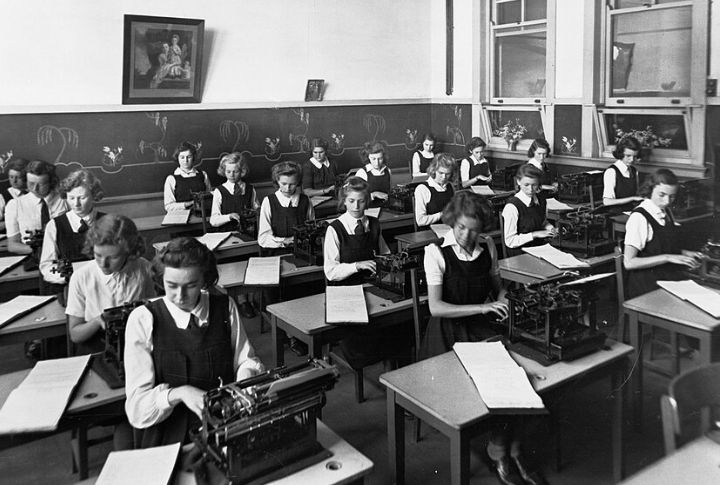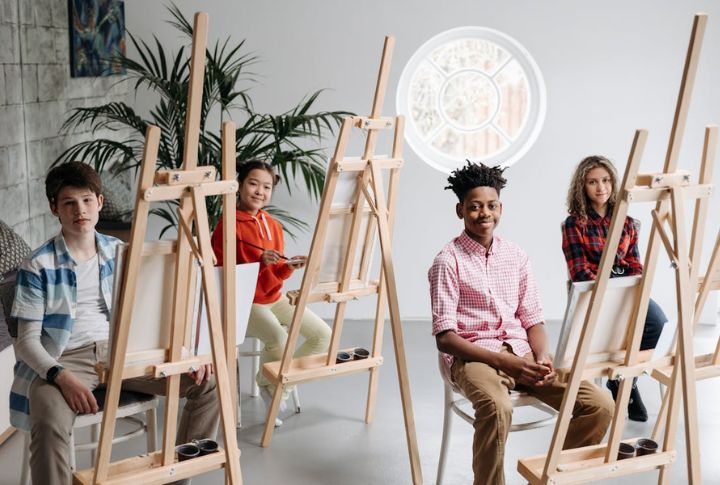
Classrooms once covered topics that shaped daily life in practical ways. These subjects helped students build skills and knowledge they carried into adulthood. Over the years, education began to reflect new technologies and career demands. Let’s take a look at the school subjects that quietly disappeared.
Penmanship

A quiet classroom used to echo with the scratch of nibs on paper. Young hands, guided by copybooks and strict drills, shaped letters into loops of discipline and pride, a mark of character in the 19th and early 20th centuries. The Palmer Method and Spencerian Script dominated desks until keyboards and standardized tests replaced them.
Civics And Citizenship Education

Broader social studies curriculums eventually eclipsed it, shifting focus away from active citizenship. Back then, schools emphasized deep knowledge of the Constitution and branches of government. To graduate, many students had to pass civics exams, and programs also encouraged hands-on experience through local government work and mock trials.
Home Economics

For much of the 20th century, sewing, cooking, budgeting, and childcare filled Home Economics classrooms, primarily preparing young women for domestic life. As the ’70s and ’80s rolled in, it shifted toward the more inclusive “Family and Consumer Science.” Budget cuts and changing priorities have nearly stitched it shut.
Industrial Arts

Drafting blueprints, repairing cars, woodworking, and metalworking were used to train students for trades during the industrial age when skilled workers were in high demand. This practical path honed craftsmanship and spatial reasoning. Over time, the hammer and chisel lost ground to screens and college prep tracks.
Music Appreciation And Theory

Tight budgets clipped these programs, leaving music education smaller or silent in some districts. In several schools, learning the basics of classical music and reading notation wasn’t optional. Classes nurtured critical listening and an appreciation for aesthetics, and students often attended symphonies or enjoyed live performances right in class.
Latin

Today, the ancient tongue has largely given way to Spanish or French, but its scholarly legacy still lingers. For centuries, Latin stood at the heart of medical and theological studies. In elite high schools, it was a cornerstone of classical education that strengthened English vocabulary and grammar skills.
Mental Math And Arithmetic Drills

Before calculators slipped into every pocket, kids drilled multiplication tables and snapped through “flash card” sessions daily. Teachers emphasized quick mental math to develop numerical fluency and endurance for solving problems on the spot. As digital tools and standardized tests gained prominence, these daily drills gradually faded from the lesson plan.
Driver’s Education

Earlier, high school meant getting behind the wheel with a certified instructor. Driver’s ed mixed classroom lessons on traffic laws with simulators and real driving practice. Many states even let teens earn school credit or fast-track a license. However, costs and liability concerns led to the outsourcing of these programs to private entities.
Typing And Keyboarding Classes

Rows of typewriters once clacked away in classrooms, teaching students to master speed, accuracy, and that all-important words-per-minute score. Good typing skills could open doors to clerical or admin jobs. Now, kids pick it up informally or in broader tech classes. Keyboards stuck around, but the formal lessons didn’t.
Art History And Aesthetic Theory

As STEM subjects expanded, lessons about artistic movements were quietly dropped from the schedule. Before that shift, a structured study of Renaissance, Baroque, and Modern art sharpened students’ eyes for design and expression. Museum visits or sketch studies encouraged students to think critically and view the world with a creative lens.

